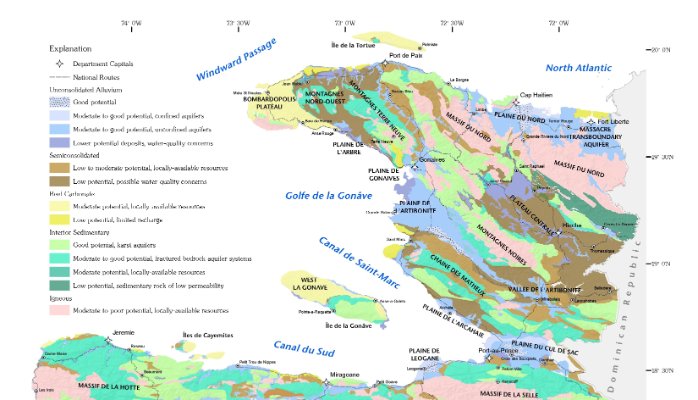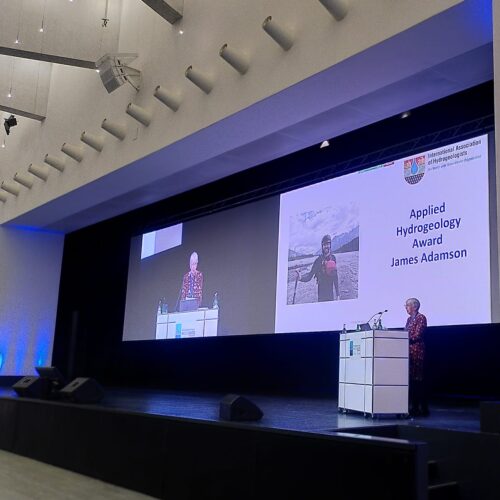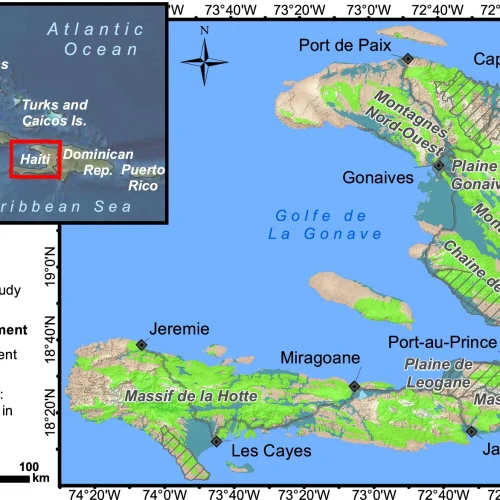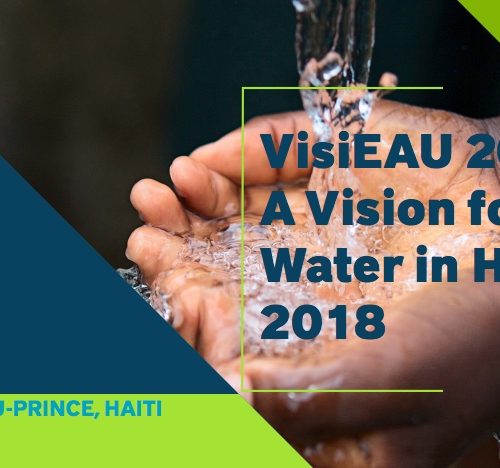- Phone: 1.844.466.7849
- Email: info@northwaterco.com
Geological Society of America: Haiti Groundwater Publication

James Adamson and Javan Miner of Northwater International applied their personal initiative to author a book chapter with Jean-Baptiste. is the CEO of Haiti’s largest and oldest well drilling company, and was the founding executive director of DINEPA (Haiti’s water & sanitation ministry). The trio has a combined 45-years studying and developing groundwater resources throughout Haiti.
Abstract
Groundwater resources in Haiti are considered abundant, with greater than 2 billion cubic meters per year (2 × 109 m3/yr) of renewable resources and 56 billion cubic meters of reserves. However, groundwater is not available everywhere and many aquifers are often low yielding, discontinuous, or are at risk from saltwater intrusion, overexploitation, reduced recharge, and contamination. Economic development, population growth, and climate change are factors that will increase stress on groundwater resources. Sector leadership, capacity building mechanisms, integrated water policy, and a clear regulatory framework are urgently needed to manage, regulate, and protect Haiti’s groundwater resources to achieve long-term security. Accomplishing this requires technical support and practical references that summarize the groundwater resources and their vulnerabilities, complexities, and opportunities. This chapter includes a summary of knowledge, information, and experience to aid the development and management of Haiti’s groundwater resources, as well as provides an overview of its complex hydrogeology. Five broad hydrogeological environments are differentiated: (1) Unconsolidated alluvium accounts for 26% of Haiti’s land area—it includes a large portion of the country’s groundwater reserves and is the most exploited for irrigation, industry, and potable water; (2) interior sedimentary units account for 32% of Haiti’s land area and include up to 25% of the country’s groundwater reserves—springs from carbonate aquifers are significant sources of water supply throughout the country; (3) reef carbonate accounts for 6% of Haiti’s land area, with locally available coastal karst aquifer systems serving some of the most rural, driest, and impoverished areas of Haiti; (4) semiconsolidated units account for 21% of Haiti’s land area—their low groundwater potential limits rural and urban water use throughout the country; and (5) igneous bedrock accounts for 15% of Haiti’s land area—its discontinuous groundwater reserves are an important source of water in rural and mountainous areas.
Adamson, J.K., Jean-Baptiste, G., and Miner, W.J., 2016, Summary of groundwater resources in Haiti, in Wessel, G.R., and Greenberg, J.K., eds., Geoscience for the Public Good and Global Development: Toward a Sustainable Future: Geological Society of America Special Paper 520, p. 1–22, doi:10.1130/2016.2520(14).
Have Questions for Us?
We are happy to answer any questions you might have!





